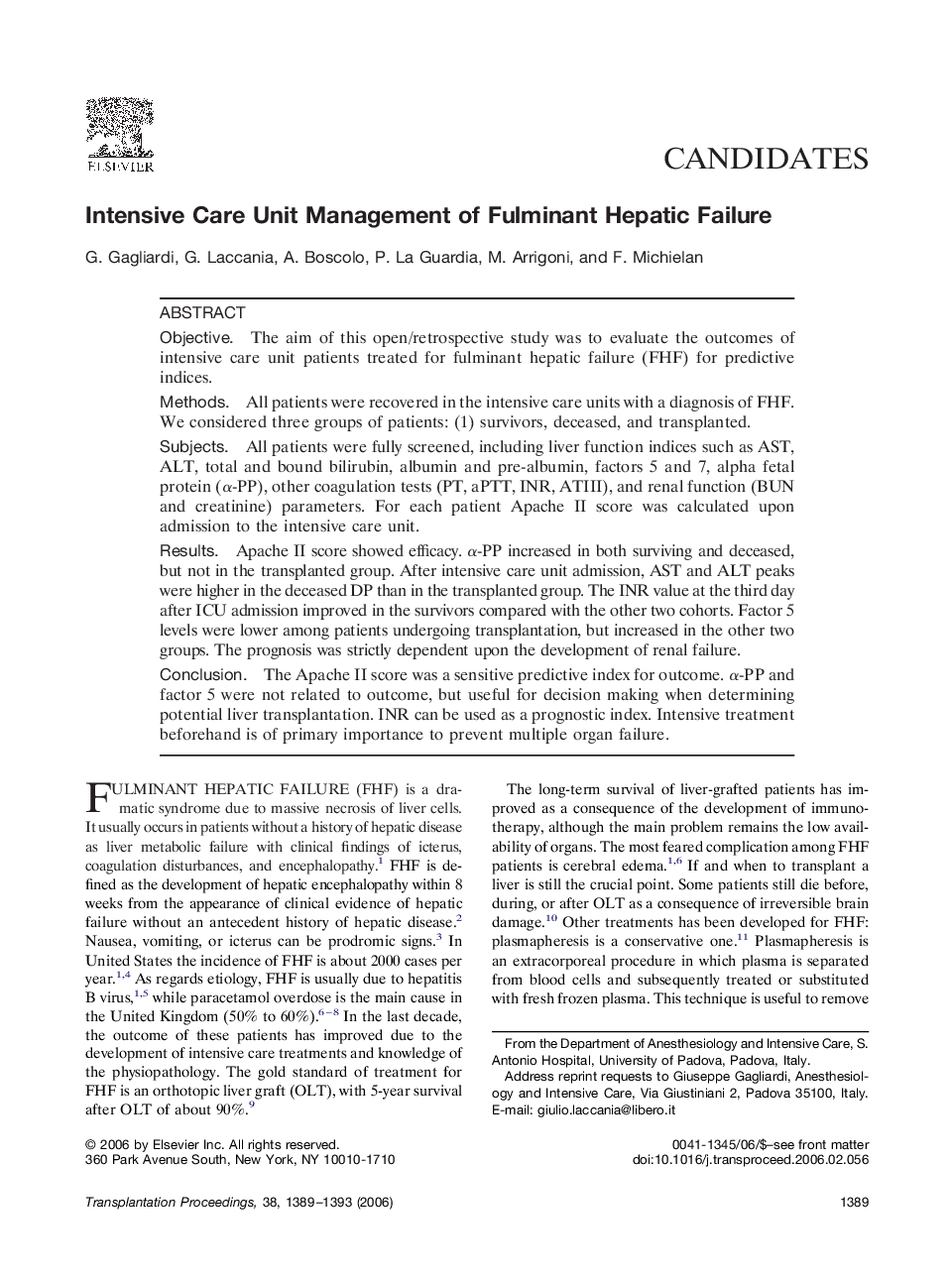| Article ID | Journal | Published Year | Pages | File Type |
|---|---|---|---|---|
| 4263445 | Transplantation Proceedings | 2006 | 5 Pages |
ObjectiveThe aim of this open/retrospective study was to evaluate the outcomes of intensive care unit patients treated for fulminant hepatic failure (FHF) for predictive indices.MethodsAll patients were recovered in the intensive care units with a diagnosis of FHF. We considered three groups of patients: (1) survivors, deceased, and transplanted.SubjectsAll patients were fully screened, including liver function indices such as AST, ALT, total and bound bilirubin, albumin and pre-albumin, factors 5 and 7, alpha fetal protein (α-PP), other coagulation tests (PT, aPTT, INR, ATIII), and renal function (BUN and creatinine) parameters. For each patient Apache II score was calculated upon admission to the intensive care unit.ResultsApache II score showed efficacy. α-PP increased in both surviving and deceased, but not in the transplanted group. After intensive care unit admission, AST and ALT peaks were higher in the deceased DP than in the transplanted group. The INR value at the third day after ICU admission improved in the survivors compared with the other two cohorts. Factor 5 levels were lower among patients undergoing transplantation, but increased in the other two groups. The prognosis was strictly dependent upon the development of renal failure.ConclusionThe Apache II score was a sensitive predictive index for outcome. α-PP and factor 5 were not related to outcome, but useful for decision making when determining potential liver transplantation. INR can be used as a prognostic index. Intensive treatment beforehand is of primary importance to prevent multiple organ failure.
